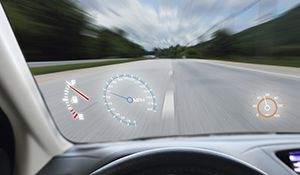
Head-up displays are futuristic-like technology that is slowly controversially finding its way into everyday vehicles. Similar to displays used in aviation and video games, head-up displays project graphics about a vehicles speed, location and warning signals into a drivers line of site above the dashboard.
The debate focuses on whether this head-up technology makes driving safer for individuals or leads to moredistracted drivers. For supporters, this technology may prevent drivers from taking their eyes off the road to look down at the speedometer or fuel gauges. Other perks may include transparent red arrows to guide you when changing lanes and reducing the head tilt when trying to look down at your instrument gauges.
For the skeptics, technology like head-up displays may be a distraction for drivers and contribute to driver information overload. Since there are no federal regulations to guide the use of head-up displays, some safety advocates are concerned.
Some companies are working on technology that would let drivers respond to text messages or post to social media in a head-up display. Other factors like font size, color and where the projection is could affect a drivers interaction with a head-up display and impact the driving experience.
Regardless of the ongoing debate, head-up display technology is in place in a variety of models throughout the country. Some automakers offer the technology as an option and others include it as standard equipment. It is a good idea to test out a vehicle with the head-up display prior to purchasing. Take it for a test drive and see if the system is right for you.
Distracted driving is one of the leading causes ofauto accidentsin the United States. If you are injured by a distracted driver, contact the personal injuries attorneys at Gordon & Partners for a free case evaluation.
Call 1 (855) 722-2552 to schedule your free consultation immediately.

 1-855-722-2552
1-855-722-2552